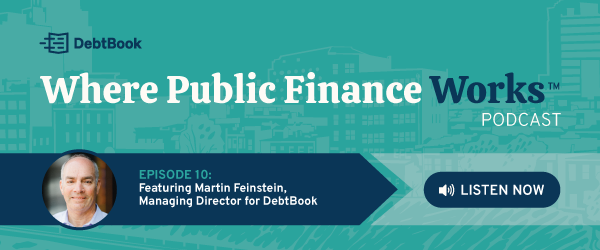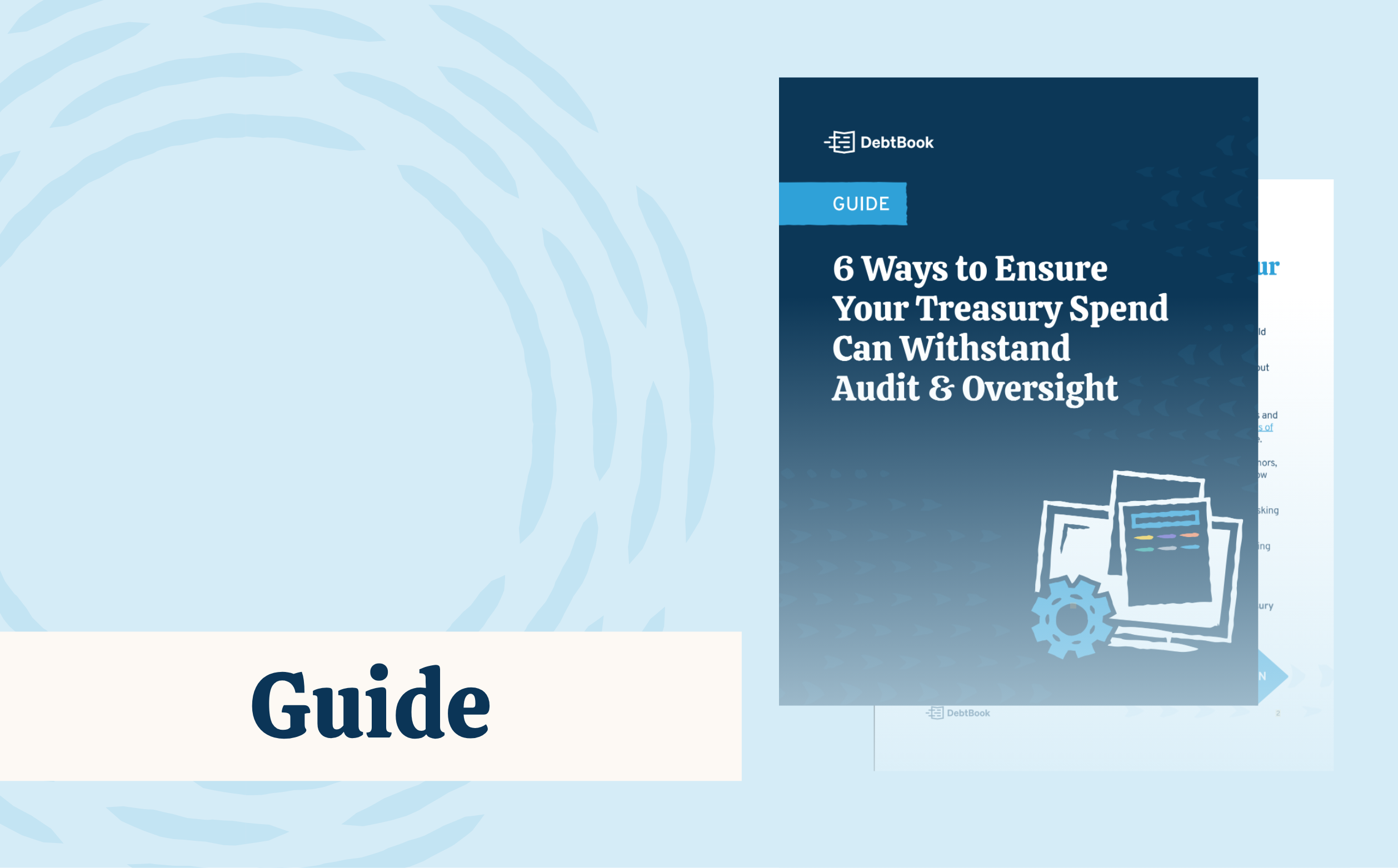In my last blog, Strategies for Financing New Municipal Capital Projects, I discussed three financing methods used to pay for a project. The first method was issuing bonds to finance the project. Unlike commercial paper, both fixed rate bond debt and variable rate bond debt provides the issuer with the entire amount of proceeds upfront, even though the full amount may not be needed immediately.
Understanding the nuances of managing a construction account is important for maximizing the efficiency and returns on bond proceeds. In this blog, I'll discuss the intricacies of reinvestment strategies, the importance of maintaining a conservative investment rate, and how to handle the challenges of aligning project drawdowns with investment returns.
The Role of the Trustee
Usually when there is a bond financing, a trustee firm is assigned the task of holding onto the bond proceeds until they need to be expanded. The trustee’s job is to invest the bond proceeds and make any required payments, both according to the issuer's instructions.
Establishing an Investment Policy
Prior to issuing any bonds, an issuer should have an investment policy in place as to how to invest any unspent bond proceeds.
The issuer’s bond indenture includes a list of permitted investments and specific requirements related to bond proceeds. If the bond indenture is unavailable, the official statement should have an “Investment Policy” section explaining the permitted investment opportunities.
All investments must meet the IRS’s tax compliance requirements. The Government Finance Officers Association (GFOA) has recommendations as to investment and management of bond proceeds.
States also have materials discussing how issuers in their state should invest bond proceeds. As an example, the California Debt and Investment Advisory Commission has a training program on investing bond proceeds.
Maximizing Returns on Bond Proceeds
Some states have state-controlled funds that issuers can use to invest their bond proceeds. There is typically no additional charge if the issuer either:
- withdraws the money early, or
- invests the money longer than anticipated.
The trustee can be instructed to invest the bond proceeds in a state-controlled fund.
If the construction period is short (e.g., 5 months), the trustee can invest the money in short-term funds (e.g., a short-term government fund). Although these funds are currently earning a high rate of return (e.g., 4.00%), historically, their returns have been very low. The bond proceeds should always be invested and not held in cash, where they earn no return.
If the construction period is long (e.g., 2 years), the trustee can invest any unspent money as instructed by the issuer’s reinvestment policy. Most policies permit reinvestment in “safe” investment, primarily treasuries (i.e., bills, notes, and bonds) or securities guaranteed by the federal government. These securities are purchased in the open market and their cash flows align with the project's initial drawdown requirements.
Navigating Drawdown Schedules and Investment Risks
As mentioned in Strategies for Financing New Municipal Capital Projects, the actual payments of the project will not match the project drawdown schedule exactly. Securities will have to be sold prior to their maturity, or maturing securities might have to be reinvested until the proceeds are needed. This opens the issuer to the potential risk of selling a bond for a loss if they have to sell a security prior to maturity. This is why when calculating the amount of proceeds needed for the project, the issuer should use a conservative investment rate on any restricted accounts.1
The lower the conservative rate, the more bond proceeds are needed to meet the project's drawdowns. The extra bond proceeds give the issuer a little “wiggle room” should they have to take an investment loss in the future.
All this selling and buying of securities goes into the calculation of the return of investments when analyzed for tax compliance. As a reminder, the return on the accounts funded with bond proceeds cannot earn above the bond’s arbitrage yield.2 This is also known as positive arbitrage.3
Example of the Life of a Construction Account
Below is a hypothetical semi-annual drawdown schedule for a $74.5 million project issued on 4/01/2024.
.png?width=324&height=388&name=Diagram%201%20(1).png)
The first analysis is to see if the drawdown schedule meets any of the three permitted spending exceptions rules, which can reduce limits on the return of unspent bond proceeds.
The three spending exception rules are below:

Using our drawdown schedule, we do not meet any of the spend down rules so our construction account maximum return is equal to the arbitrage yield.
.png?width=561&height=485&name=Diagram%202%20(1).png)
To calculate the “estimated” bond proceeds required to finance the project, our example uses an assumed market achievable investment rate of 1.75%, which is below the arbitrage yield.
.png?width=743&height=490&name=Diagram%203%20(1).png)
The actual amount of bond proceeds needed to fund the project, if it does not meet the spending exception rules (explained later in the blog), is the present value of the drawdowns calculated at the arbitrage yield.
In our example we calculated the arbitrage yield to be 1.75%. The issuer must deposit in the construction account at least $73,324,934.83 in bond proceeds. If the portfolio of securities produces a return greater than the arbitrage yield, the issuer will have to either:
- look to purchase securities that have a lower return, or
- rebate the excess earnings to the treasury, usually at the end of the construction period.
Below is a portfolio of securities, with a return of 1.74%, that meets the original drawdown schedule and earns below the bond’s arbitrage yield:
[Note: These are fictitious securities with fictitious rates for demonstration purposes only. Most TSY securities mature on either the 15th or the last day of the month.]
.png?width=1000&height=726&name=Diagram%204%20(1).png)
The portfolio of securities purchased allows the trustee to send the needed cash to the construction company based on the initial drawdown schedule. But on 8/01/2024, the construction firms inform the issuer they no longer need $12,000,000 on 1/01/2025, they now need $8,000,000 (due to a weather delay) and they will need the $4,000,000 difference on 4/01/2026.
The first step is to either:
- sell today $4,000,000 of the 12/30/2024 security into the market, if there is no loss, or
- if there is a loss, wait until the 12/30/2024 security matures and purchase $4,000,000 of a 3/31/2026 maturing security.
Based on a review of the market, rates have increased so why take a loss now? Instead, wait until the 12/30/2024 security matures and buy enough $4,000,000 of the 3/31/2026 security (rates increased so coupon is now 2.5%) to meet the $4,000,000 need on 4/01/2026. (Remember: in this example everything is sold at par with no accrued interest).

The purchase of the $4,000,000 2.50% bond maturing on 3/31/2026 has increased the overall yield of the portfolio to 1.831%, which is above the arbitrage yield 1.75%, so the issuer has to rebate the excess earnings.
The arbitrage rebate firm calculates the rebate due to the treasury to be $56,933. The issuer could do the rebate calculation at the end of the construction account and use some of the ending balance to pay the rebate. Then they could use the remaining ending balance to pay the next debt service payment.
Summary
Typically, there are many changes to the initial construction draw schedule requirements. As these changes occur, securities in the construction account must be bought and sold.
It’s the trustee’s job to make sure the ending balance never goes negative while buying and selling securities.
When requested, it is the arbitrage rebate firm’s job to analyze if the client must make a rebate payment to treasury and if so, how much. The final securities cash flow reviewed by the arbitrage rebate firm can be the culmination of hundreds of trades depending on the length of the construction draw schedule.
Notes
- In a Design/Build contract, the issuer gives the requested bond proceeds to the contractor at closing so there are no rebate issues, for tax purposes, the money is considered spent.
- If an issue meets any of the three spending exception rules and the issuer has a “bona fide” debt service fund (i.e., a dedicated fund where the issuer makes deposits so they can meet the next principal and interest payment), that fund becomes exempt from rebate. This could be an advantage to the issuer in a steeply inverted yield curve environment.
1 The construction account is a restricted/rebateable account UNLESS it meets any spending exception rules. The earnings are restricted to the arbitrage yield on the bond issue (i.e., the rate the Fed calculates you borrow the money at) but if you over-earn, you can rebate the over-investment earns back to the treasury. If the construction account meets any of the three spend down rules, the account’s earnings are not restricted.
2 The arbitrage yield of a bond issuance is what the US Treasury feels is the borrowing rate of the tax-exempt bond issue. The arbitrage yield is the maximum earning yield proceeds can earn from a tax-exempt bond issue, excluding certain moneys based on specific Treasury rules.
3 Positive arbitrage is when the overall return on the securities in the construction account (or any yield restricted account funded with bond proceeds) earns above the “arbitrage yield”. For tax purposes, the arbitrage yield is the overall bond yield of the bond issuance, as defined by the IRS.
Related Municipal Finance Reading
- What the Refunding is Going On? Exploring Tax-Exempt Bond Refunding
- Bond Insurance: Making a Marketable Credit Better
- Strategies for Financing New Municipal Capital Projects
Disclaimer: DebtBook does not provide professional services or advice. DebtBook has prepared these materials for general informational and educational purposes, which means we have not tailored the information to your specific circumstances. Please consult your professional advisors before taking action based on any information in these materials. Any use of this information is solely at your own risk








